
Timer Control Settings
Overview – Byo Yomi
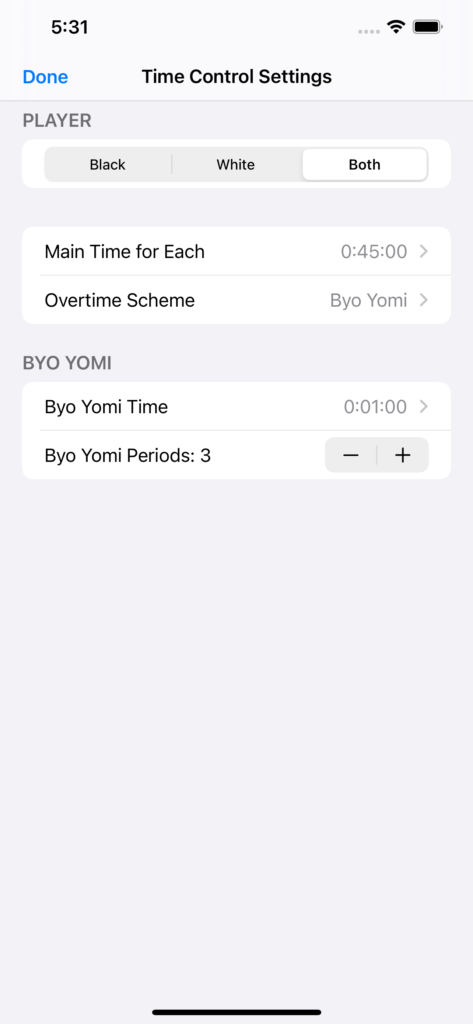
In the top part of the screen you choose for which player you are setting the time control, the main time and the overtime scheme. You may do this separately for Black and White. If you choose Both the settings apply to both Black and White. In particular, if you had different settings for the two players you will lose the informations which were not visible at the time you change to Both.
Below the player selection you determine the length of the main time and the overtime scheme.
The lower part of the screen is overtime scheme specific.
Here, Byo Yomi (‘reading the seconds’ or ‘countdown’ in Japanese) has been chosen. After the main time has elapsed, the player has a specified number of periods with a specified time available. In the example on the left this would be 3 periods of 1 minute each. As long as the Byo Yomi Time is not exceeded the number of periods is not decremented. In other words you may (in the example on the left) exceed the Byo Yomi Time twice before reaching the final period where you suffer sudden death when the Byo Yomi time elapses.
The change from main time to overtime scheme is automatic with all schemes. I.e. you need not to worry about the clock while playing.
Overtime Schemes
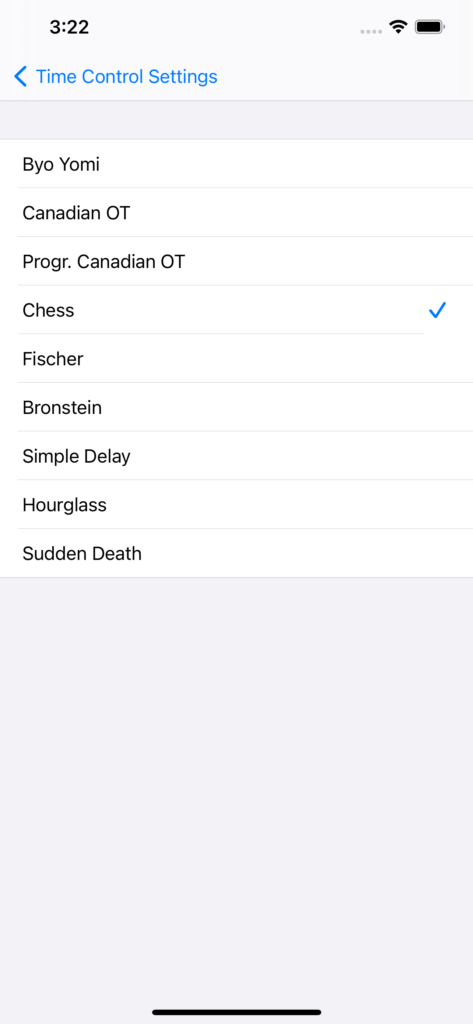
These are the overtime schemes available to choose from:
- Byo Yomi
- Canadian Byo Yomi
- Progressive Byo Yomi
- Chess
- Fisher
- Bronstein
- Simple Delay
- Hourglass
- Sudden Death
(Progressive) Canadian Byo Yomi
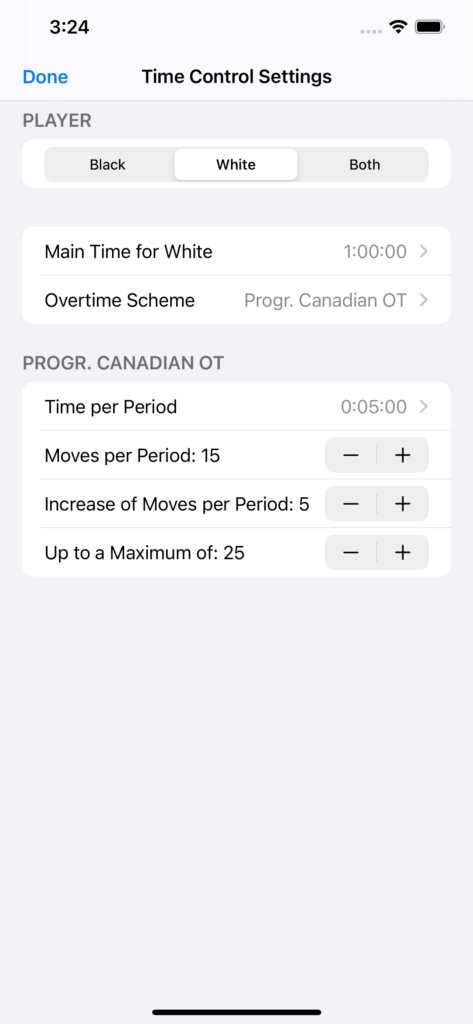
With Canadian Byo Yomi you need to play the specified number of moves within the time given per period after the main time has elapsed. In the example at the left it would be 15 moves within 5 minutes. Once the 15 moves have been played a new period of 5 minutes starts for the next 15 moves.
Additionally, in Progressive Canadian Byo Yomi the number of moves is increased from period to period up to a specified maximum. For instance by 5 moves up to 25. For the straight Canadian Byo Yomi the two last fields in the entry form are not needed nor shown.
Chess
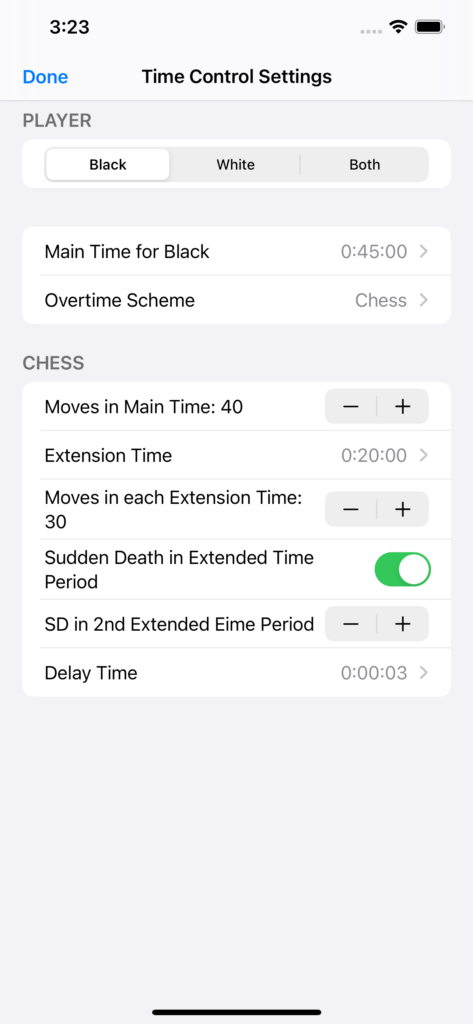
In Chess you need to complete a certain number of moves within a given time (here the main time). In the example shown on the left it would be 40 moves within 45 minutes. Once the first 40 moves have been played an extension time is added to the clock for the next specified number of moves. In the example on the left 20 minutes for the next 30 moves. This may continue for ever or you can specify an extension period where the player suffers sudden death if exeeded.
In addition a delay time may be specified. This causes the clock to start running only after that time at the beginning of each move.
Fisher / Bronstein / Simple Delay
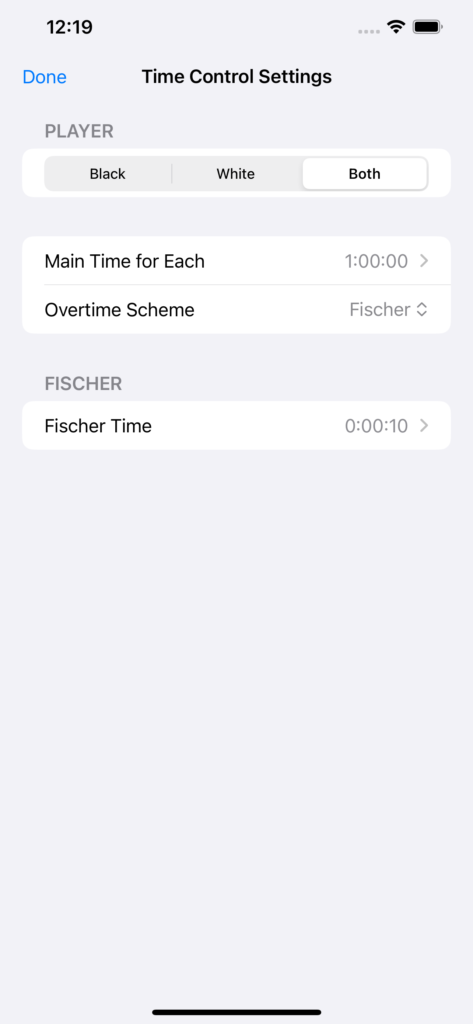
The Fischer, Bronstein and Simple Delay schemes all add a certain time to each move played but each with a subtle difference.
With the Fischer scheme (as proposed by the former World Champion of Chess, Bobby Fischer) the extra time is added to the clock time at the beginning of each move.
The Bronstein scheme (named after the Russian International Grandmaster David Bronstein) differs from the Fischer scheme only that the additional increment of time is added after the move.
With Simple Delay no time is added to the clock but the clock is startedonly after the delay has been run down at each move.
With these three schemes there is only one additional setting: the time to increase the time on the clock or the time to delay it.
Hourglass / Sudden Death
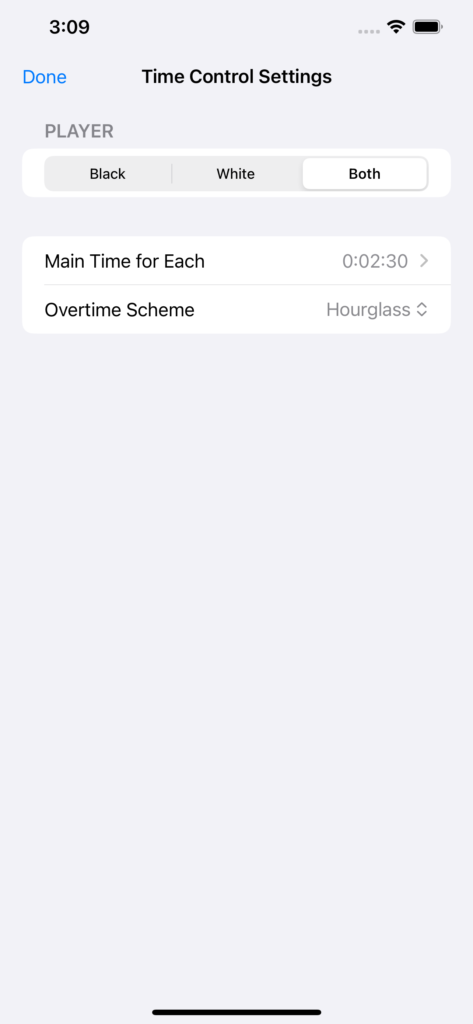
The Hourglass scheme works just as a traditional hourglass. While the clock of the player pondering his/her move is running down that time is added to the opponents clock. The sum of the two players clock times remains constant, in the example on the left for instance at 5 minutes.
With Sudden Death you simply can use the time set as main time and that is it.
Both these schemes need no additional scheme specific settings.